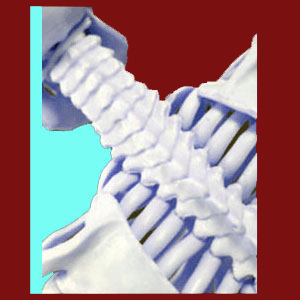
The facet joints and posture are related in several ways, with facet syndrome potentially contributing to poor posture and poor posture potentially contributing to facet joint pain. Although not a topic of much study in the back pain treatment arena, we have observed the relationship between facet joint symptoms and poor posture for many years already.
Posture is a difficult topic to discuss with back pain care providers. This is because many doctors are naturally partial to the idea of bad anatomical positioning being a primary cause for pain, while others are inclined to see it as a direct or indirect result. It takes a truly objective medical mind to understand the truth that both viewpoints are completely correct and an even more developed sense of diagnostic intuition to differentiate cause from effect when it comes to poor posture.
This fascinating article provides a complete view of the relationship between facet joint pain and bad posture. We will discuss cause and effect scenarios in the pain and posture relationship and provide some postural tips to assist patients in improving their anatomical positioning organically.
Facet Joints and Posture Effect
Facet joint pain can certainly cause or contribute to poor posture. Most cases of symptomatic facet joint degeneration involve increased symptomology when the affected vertebral bones are mobilized. Therefore, some patients tend to develop poor postural habits as a means of reducing mobilization of the spine through its normal range of motion.
Some patients assume an overly straight anatomical position, while others tend to slouch and assume a forward head posture. Both of these scenarios can be caused by facet joint pain and might lead to exacerbated symptomology due to chronic muscular strain or even nerve compression in some cases.
Regardless of the specific effect on posture, facet joint pain, as well as many other spinal diagnoses, can negatively impact anatomical positioning, potentially worsening pain through a variety of mechanisms.
Facet Syndrome and Posture Causation
In similar fashion, a long history of poor posture can actually reshape the spine and upper skeletal structures. Bad postural positioning can increase the effects of degeneration on the spine, since poor posture magnifies the load of the body and exacerbates the accumulated stress of managing this load. Therefore, long periods of poor posture can directly contribute to facet joint degeneration and the commencement of facet syndrome symptomology in some patients.
Poor posture will have identical negative effects on other spinal tissues, which might create secondary negative effects on the facet joints, as well. Chronic poor posture can increase the rate and severity of disc desiccation and osteoarthritis, incite herniated discs and lead to permanent changes in the lordosis and kyphosis of the spine. All of these factors can negatively impact the facet joints in terms of alignment and rate of structural deterioration.
Facet Joints and Posture Guidance
In order to minimize the effects of bad posture on the spine, regardless of its cause, we recommend that all patients follow these simple tips for maximum health and wellness throughout life:
Be sure to evaluate your posture on an ongoing basis. Be conscious of how you stand, sit and even recline. Be particularly conscious of postures that are maintained for long periods of time, such as when working or sleeping. Use pillows to maintain good posture when sitting or sleeping.
Try to maintain a neutral spine without loading the spine unnecessarily. Each spine wants to find natural balance, but can be thrown out of natural positioning through bad postural habits.
Stand and sit straight, but not so straight as to reduce the curvatures in your vertebral column. Keep the shoulders and neck back, not allowing them to fall forward. Allowing the head to protrude forward (forward head posture) is a growing problem due to computer and cell phone use. Be very conscious of this postural tendency, since it can become pathological.
Facet Joint Pain > Causes of Facet Joint Pain > Facet Joints Posture





